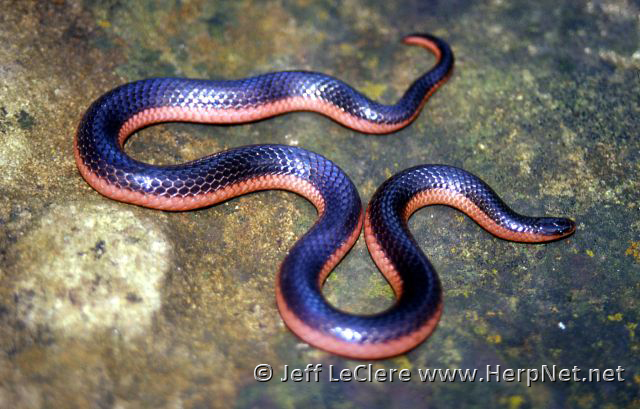Western Worm Snake (Carphophis vermis)
Alternate names: Western Wormsnake
by Jeff LeClere
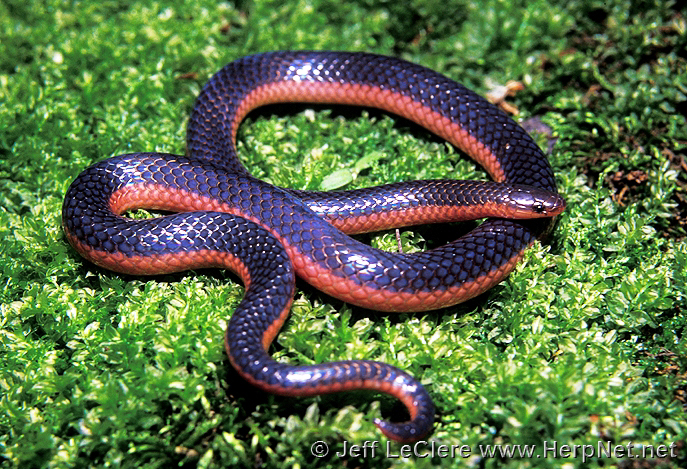
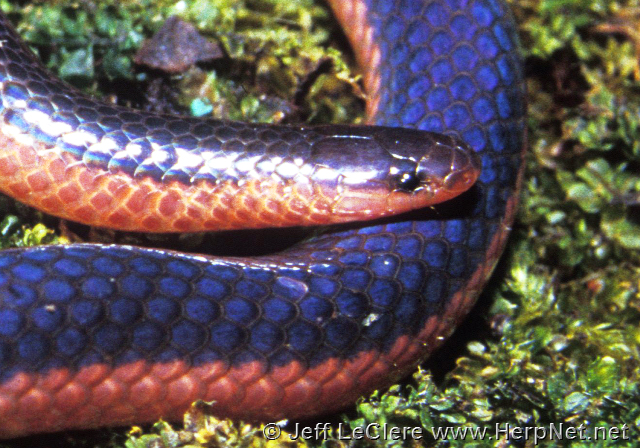
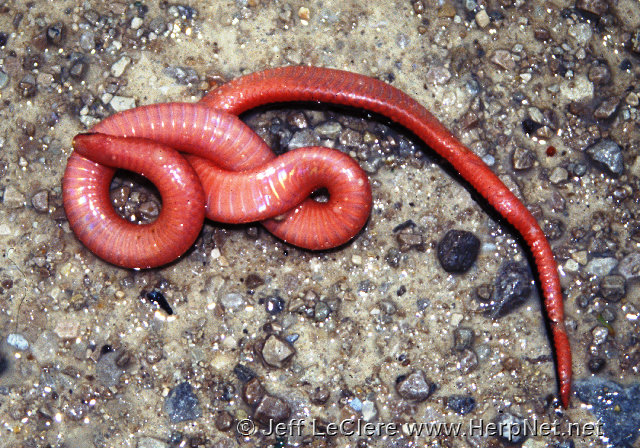
Status
THREATENED and Species of Greatest Conservation Need. It is illegal to kill or collect this species by law in Iowa. Due to their secretive nature, there are probably more populations than records now show. Help us fill in the gaps and report any findings to us or the DNR.
Description
Harmless to humans. This is a small Iowa species measuring 7 1/2-11 inches long (Conant and Collins, 1991). The dorsum is plain bluish black, purplish black, or (rarely) brownish. The belly is unmarked also and is pink or salmon. The ventral coloration extends onto the sides of the snake to the the third scale row. The head is pointed and the eyes are small and often difficult to discern from a distance. The tail is sharply pointed. The scales are smooth and the anal plate is divided. This snake cannot be confused with any other Iowa snake; the back is devoid of any markings or traces of such, the eyes are indistinct, and the belly is pink, but never a deep red.
Subspecies
There are no subspecies of the western worm snake, Carphophis vermis, recognized.
Range
The western worm snake is found in approximately the southern third of Iowa in scattered locations. The lack of searches is probably the reason for the paucity of more known locations.
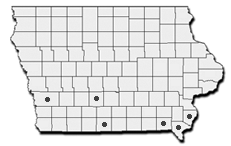
Habitat
These snakes are usually found in woodlands where there is adequate food and shelter. Christiansen and Bailey (1991) state that the western worm snake is found in rocky wooded areas, but may occur in woodlands without rocks in southwestern Iowa. Johnson (1992) also lists open hillsides as habitat in Missouri.
Habits
Western worm snakes resemble night crawlers in size, and are also similarly colored above as the anterior part of a night crawler. Western worm snakes are active from April to October and probably hibernate in small burrows or in rock crevices. Drda (1968) found them overwintering in caves in Missouri. Western worms snakes may breed in spring and fall (Collins, 1993). They lay 2 to 5 eggs which hatch in August. The young look like the adults.
Western worm snakes are almost never seen traveling about in the open. The exceptions may be during periods of heavy rains when a specimen may be discovered crossing a road through woodland habitats. They are clearly the most subterranean of Iowa’s small snakes. They may be found in spring on rocky wooded hillsides hiding beneath rocks, bark, logs, and leaf litter when it is moist under these objects. During the summer and fall, they seem to disappear from these areas and move to underground burrows or deeper into the woods where it remains moist. When uncovered, they are obviously very uncomfortable above the ground and will try to immediately take shelter or burrow into the ground. They are not agile when compared to most other snakes and a specimen will wildly thrash when fleeing above ground without really making much progress. They have a rigid, wiry feel and will try to burrow their way out of one’s hands instead of biting. They may also jab with the pointed tail when restrained.
Food
Western worm snakes have been reported to eat earthworms exclusively (Henderson, 1974), but other workers have also suggested that they may consume soft-bodied insects as well.
